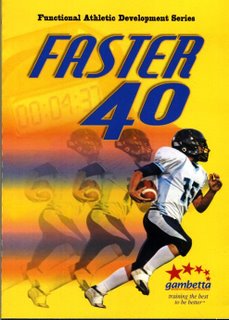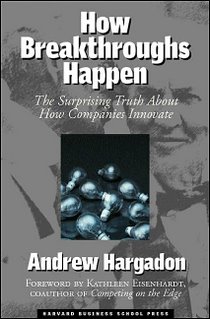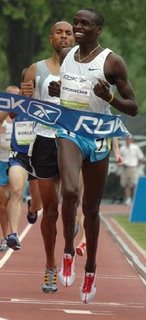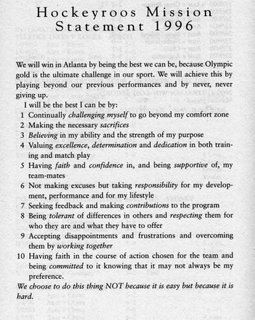I found this on ESPN.com last year and saved it. This article really hit home with me, I think what he is talking about transcends basketball, it is a problem with all sports. In regards to basketball I can’t watch a game at any level anymore. There are no fundamentals. The most basic aspects of the game are non existent.
America needs more 'teaching' from its coaches
By Jay Bilas Special to ESPN.com
I have been watching more high school and junior basketball than ever, and I am worried about what I see. The canary in the United States' basketball coal mine has not yet died, but it is starting to teeter on its perch. No reasonable basketball person can refute the fact that the fundamental skills of American players are slipping, and so is the American game. I believe a primary reason is an increased emphasis on coaching the game, and a decreased emphasis on teaching our kids how to play the game. Pete Newell, the legendary coach and teacher, has often said that basketball is "over-coached and under-taught". He is absolutely right, and that is finally catching up with us, as is the rest of the basketball world.
Generally, "coaching" consists of team preparation, the devising of game plans and schemes to defeat opponents. When you are coaching, you are dealing with strategies, different offenses and defenses, and putting in plays to take advantage of the skills, strengths and weaknesses of your players. The measure of a coach is the quality of the development of his system, and has been distilled into winning.
"Teaching" consists of instruction and training of individuals in the fundamental skills of the game, and in teaching players how to play, instead of how to run plays. The measure of a teacher is not in winning, but in the fundamental soundness and skill level of the players taught. A player with excellent fundamentals and skills can play successfully in any system. Generally, American players are less skilled than their European counterparts. The United States produces the best "athletes" in the game, but not necessarily the best "basketball players".
Here are the reasons why American coaches, at all levels, have gotten away from teaching, and have gravitated more to coaching.
Immediate Gratification of Coaches: Coaches, especially at the grassroots and high school levels, seem more interested than ever in winning rather than developing well-skilled and fundamentally sound players. They are impatient, and too focused on winning games instead of developing players. It takes time to teach and instill discipline. While it may seem more important to spend the majority of time in practice working on the execution of halfcourt offense, or putting in new set plays, it is far more important to develop the skills of your players. Coaches do not have enough time with their players anymore, which means that floor time cannot be wasted. High school coaches get less floor time than ever to teach, and less and less access to their players. Players now play an excessive amount of games over the summer in AAU competition, which means that they play many games and have far fewer practices.
While young kids are busy traversing the country to play in AAU competitions, they are spending hour upon hour running up and down the court in a helter-skelter atmosphere where, 95 percent of the time, they do not have the ball in their hands. What this does is cement bad habits -- and habits, good or bad, are what players revert to under stress. If these same players were in focused practice environments instead of in so many games, they would spend the majority of time with the ball in their hands, working on their skills and footwork.
Increased Specialization: Basketball in this country has become over-specialized, and players have become "systematized". Kids are identified by size and body type into positions way too early on in their development and are "coached" differently. As young kids, players are told, "you are a point guard," "you are a power forward," "you are a center." Then the guards and big guys are separated, sent to opposite ends of the floor, and coached to work upon different skills that are specific to position. In Europe, players are encouraged to work on the same skills, whether small guard or big forward.
The result of this specialization is that our players are boxed into positions, and therefore limited. Why should kids be labeled and limited into being "point guards" or "shooting guards" and coached to be only that? A point guard is coached to be a primary ballhandler, while a shooting guard is coached to be a scorer and therefore limited in making the "transition" to the point. Similarly, big guys in America are used as screeners, rebounders and low-post robots. Very few programs in America, college, high school or lower level, produce versatile and skilled big men who can dribble, pass and shoot.
We cannot expect the players to combat this trend. Players want to play and will do whatever the coaches tell them to do because, ultimately, the players want to play out on the floor, and coaches control playing time. Doing what the coach tells you to do is a necessary element of gaining playing time at any level. And we cannot expect players to simply work on individual skills on their own. We would not expect kids to educate themselves outside of a classroom environment, we certainly cannot expect it in sport.
European programs approach teaching differently. Players are not limited in how much they can practice, and therefore spend from 60 to 90 minutes in the morning working on footwork, shooting and ball skills. The same players then practice another 60 to 90 minutes in the afternoon on more team-oriented concepts. There is no separation of big guys and guards, every player works on the same skills. As a result, European players are generally more well-rounded and more fundamentally sound. And they are more coveted by coaches at all levels.
Shoe Companies and AAU Basketball: Contrary to popular belief, the shoe companies and AAU programs are not full of bad people looking to exploit kids. As in any endeavor, there are good people and bad people in those organizations. However, it is clear that the goals of the shoe companies and AAU programs are at odds with the proper teaching and development of fundamentally sound players.
Whether well intentioned or not, shoe companies are in the business of selling shoes, not growing the game. While the major shoe companies have "grassroots" programs, they are more interested in growing their influence than in growing the game. The best evidence of that is in the national camps run by Nike and adidas every summer. These camps are designed to showcase players against the best competition, not improve their skills. Instead of running stations in the morning or early afternoon, where the players would spend time at each different basket in the gym working on individual skills, they play games all day.
The coaches and scouts evaluating these players would much rather watch the kids in one game per day and get the chance to evaluate skill levels through station work. And the kids would be better off as well. But teaching is not the goal.
The same goes for AAU programs. Far too many AAU coaches are more interested in playing and winning games, rather than teaching young players the skills necessary to be successful players. While young kids are traveling the country playing games, they are not able to practice or work on their games. It is really that simple.
Skills 'Players' Need to Have
Fundamentally sound players need to be able to handle the ball, shoot the ball, pass the ball, and use their feet. Unless a player has these basic skills mastered, he will be limited and therefore easy to guard and difficult to play with. Here are the basic skills needed by every player on the court:
Ballhandling: If a player cannot handle the ball with either hand, he will get attacked and overwhelmed by the defense because he cannot go anywhere off the dribble. To be a competent ballhandler, a player needs to be able to control the ball with either hand, and know the proper use of the dribble given the situation. Once a player knows when and how to dribble, how to set up his man to make a dribble move, and has the basic skills and footwork, he becomes much harder to guard, and much more valuable to any team.
The best way to become a better ballhandler is to handle the ball more often. Repetition is the key to success as a ballhandler, whether it is doing game speed drills in dribbling around cones or executing the footwork and handling of a spin move, rocker step or reverse pivot. Ballhandlers must also learn to handle the ball playing against a defender. That is the only way to learn how to protect the ball, use the body, and learn to set the defender up for counters. If you want to make players better handlers of the ball, make them handle the ball. And make the big guys handle it in the same situations you ask guards to handle it.
Shooting If you cannot shoot the ball, you will always be able to get an open shot, because nobody guards a substandard shooter. Like ballhandling, the best way to become a better shooter is to shoot the ball over and over again at game speed. The motto for shooters in practice should be "game shots, game spots, at game speed". Shooting "game" shots over and over creates muscle memory, and provides confidence to the shooter.
The first thing shooters must learn to do is to look at the basket when they catch the ball. Defenders must believe that you are a threat to shoot the ball, and nobody will by that if you don't look at the basket, and no good defender will go for a shot fake. In looking at the rim, a player will be able to see what is going on under it as well. To be a good shooter, a player has to use his feet effectively to create space and get open, and must be ready to shoot as the ball arrives. Good shooters go straight up and down without drifting, and therefore don't have to shoot at a moving target. They have their shooting hand under the ball, and the elbow under their shooting hand. The motion should be up and not out in order to shoot a soft ball with good trajectory and velocity. Whatever shot a player wants to perfect, the proper repetition of that particular shot is the key. No player can get that proper repetition by simply playing in games, but must be made to do it in practice.
Passing: No skill in American basketball that is more neglected than passing. Good coaches will tell you that the quality of the pass determines the quality of the shot. That is absolutely correct. In order to score, the defense has to be moved, and the pass is the most effective way to move a defense.
Players need to be taught how to properly throw two-hand chest passes, overhead passes, bounce passes with either hand, and to pass with exactness and imagination. The first rule of passing is that, if you have a clear path to an open player, pass him the ball. You do not pass-fake to open people, you pass the ball to them. Passing should not be a last resort, after you have exhausted all possibilities to obtain your own shot. Rather, you should pass the ball to get your team the best quality shot. Watch any game, on any level, and see for yourself how many times passes are made only when all other avenues have been closed. It happens a lot.If a player cannot pass, he cannot play, and the ball dies in his hands.
Footwork: Basketball is played with the feet, and every phase of the game is dependent upon good footwork. In any game, a player plays 90 percent or more of the game without the ball. Learning how to play with your feet, offensively and defensively, is of vital importance for basketball players at any level, and an area in which youngsters need the most attention and instruction. Without attention to detail of the footwork necessary to execute basic moves in the game, and to create space, the player is severely limited.
The United States has the best athletes, the best coaches and the most basketball resources in the world. We need to spend less time coaching, and more time teaching, especially at lower levels of the game. We need to encourage coaches to teach, not just to coach, and for players to practice, not just to play. There is no reason why our best athletes cannot be our best players. If we do a better job of teaching, the level of play in the United States will skyrocket, and the game will be better for it.


















